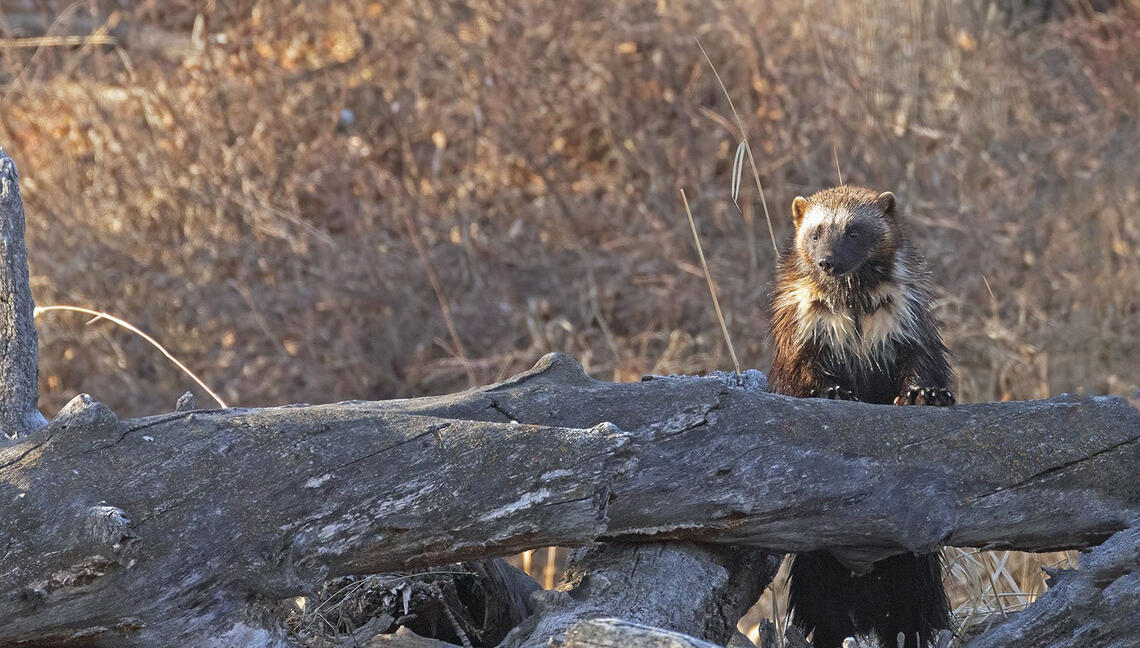June 29, 2023
Raccoon boom looms as urban wildlife learns to thrive, says UCalgary researcher

Brace yourself, Calgary — masked bandits are coming, and they want to steal your garbage.
While a few nocturnal bin raiders already call this city home, a UCalgary urban wildlife expert says the city’s nascent raccoon population is set to flourish, due to an urban environment that suits furry opportunists all too well.
“They've been showing up in different places in the city, and this is just the beginning — that is something that is really important for people to be aware of,” says Dr. Shelley Alexander, PhD, a professor in the Department of Geology and founder of the Canid Conservation Science Lab at UCalgary.
“People get up in arms about coyotes but they are really simple to live with compared to something like a raccoon — a raccoon has little hands that can open your garage door and aid climbing walls. We have to realize that living with increased types and numbers of urban wildlife is the future and eradication programs simply don't work, ethically or biologically.”
At a time when it's harder than ever to creep around unnoticed, a potential raccoon boom is only one evolving piece in Calgary’s urban ecosystem, which has seen significant changes in recent years.
With cameras literally everywhere, from doorbells to back alleys, Alexander says footage of creatures that used to elude human attention are now being spotted on security systems, causing people to perceive the animals are novel in the city.
This year alone, lenses have documented wolverines wandering in Airdrie and the southern edge of Calgary, with urban sightings of moose, badger and bear making the rounds on social media.

Airdrie photographer Gordon Cooke captured images of the elusive wolverine in April.
Gordon Cooke, used with permission
“A lot of what’s going on is there is saturation camera trapping — everybody has a doorbell camera, or camera in their backyard, so cumulatively there is just a lot more awareness due to the recording going on,” says Alexander.
And while cameras have exposed some previously secretive residents of our city, the urban wildlife researcher says there has also been significant shifts in wildlife populations living and thriving amongst us, as Calgary grows larger and the urban canopy grows thicker.
“There is a redistribution of the species we call ‘edge tolerant’, meaning those that can live near and with people, and we are encroaching on their space with the constant expansion of the city,” says Alexander.
“They base their activity out of the little remnants of habitat that we have left for them, plus they use all of these urban areas and some even use the surroundings as an anti-predator strategy. For a while our jackrabbits were hugely abundant, and it took a while for our coyotes to figure out how to take them in an urban setting. Coyote now exert an important regulatory control on those species — like so many others (for example, mice, gophers, geese, etc.).”
Relative newcomer has advantage over other predators
Alexander says one relative newcomer that’s obviously taken to Calgary is the bobcat, which a decade ago was almost unheard of, but can now be found in virtually every neighbourhood.
“Bobcats have found a niche in our environment, and we really don't do a lot to discourage them — mostly people seem to think they are cute, at least until they drop off the back of the fence wanting to eat their cat” she says.
Like foxes in European cities, Alexander says Calgary’s love-affair with the wild felines is an advantage other urban predators don’t have.
“Bobcats are capable of three-dimensional travel using our fences and the like, and they’ve really figured out how to exploit this environment,” she says.
“They've shifted here because people don't mind them living with babies underneath their deck or drinking out of their backyard ponds, whereas when coyotes do that they are chased away or killed.”
We need to learn to live with urban wildlife
As raccoons and other populations flourish, Alexander says city residents need to come to terms with the wildlife living around them. The researcher says most people would be shocked at how often they are being observed by predators like coyotes and bobcats, without ever being aware: “These carnivores work very, very hard to avoid people and conflict.”
“We’re building bigger cities that are getting older; they’re getting big trees and we want green spaces, tree cover is implicated in reducing urban contributions to global warming, and so we need to understand those landscapes are going to be transitioning and novel species are going to show up to live with us,” says Alexander.
“We need to develop a skill set in the city, just as if we are going into the mountains for a hike — people need to ask themselves ‘How do we live with wildlife?’, and how do we react to wildlife and set boundaries.
“It’s best to figure it out now with species like coyotes, because it’s a lot easier to learn the rules now than when raccoons are in your midst.”















